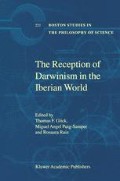Abstract
Background. Trials that do not allow to reject the null hypothesis of no treatment effect may have had an inappropriate design. Trials are virtually never assessed for correlation between responses to different treatment modalities.
Access this chapter
Tax calculation will be finalised at checkout
Purchases are for personal use only
Preview
Unable to display preview. Download preview PDF.
References
Grieve AP. Bayesian analyses of two-treatment crossover studies. Stat Meth Med Res 1994; 3: 407–429.
Grizzle JE. The two-period change-over design and its use in clinical trials. Biometrics 2965; 22: 467–480.
Cleophas TJ. Testing crossover studies for carryover effects. Angiology 1989; 40: 287–295.
Cornfield J, O’neill RT. Minutes of the Food and Drug Administration Advisory Committee Meeting, June, 23, 1976.
Wallenstein S, Fisher AC. The analysis of the two-period repeated measurements crossover design with application to clinical trials. Biometrics 1977; 33: 261–269.
Zimmermann H, Rahlfs V. Testing hypotheses in the two-period change-over with binary data. Biom J 1978; 20: 133–141.
Hills M, Armitage P. The two-period crossover clinical trial. Br J Clin Pharmacol 1979; 8: 7–20.
Brown BW. The crossover experiment for clinical trials. Biometrics 1980; 36: 69–79.
Presscott RJ. The comparison of success rates in crossover trials in the presence of an order effect. Appl Stat 1981; 30: 9–15.
Barker M, Hew RJ, Huitson A, Poloniecki J. The two-period crossover trial. Bull Appl Stat 1982; 9: 67–112.
Louis TA, Lavori PW, Bailar JC, Polansky M. Crossover and self-controlled designs in clinical research. N Engl J Med 1984; 310: 24–31.
Cleophas TJ, Fennis JFM, van’ t Laar A. Alpha-and beta-blockade and beta-stimulation in Raynaud’s syndrome. Angiology 1985; 36: 219–226.
Easterbrook PJ, Berlin JA, Gopalan R, Matthews Dr Publication bias in clinical research. Lancet 1991; 337: 867–872.
Cleophas TJ, Tavenier P. Fundamental issues of choosing the right type of trial. Am J Ther 1994; 1: 327–332.
Author information
Authors and Affiliations
Rights and permissions
Copyright information
© 1999 Springer Science+Business Media Dordrecht
About this chapter
Cite this chapter
Cleophas, T.J. (1999). Clinical Trials: Relevance of Correlation Between Treatment Responses. In: Human Experimentation. Springer, Dordrecht. https://doi.org/10.1007/978-94-011-4663-0_5
Download citation
DOI: https://doi.org/10.1007/978-94-011-4663-0_5
Publisher Name: Springer, Dordrecht
Print ISBN: 978-0-7923-5827-5
Online ISBN: 978-94-011-4663-0
eBook Packages: Springer Book Archive

